|
by Dark Watcher |
|
|
In the mid 1980s, Nintendo became both a savior and a dominant force to video gaming as we know it. Twenty plus years later,
Nintendo continues to remain a contender in the console market. It would come as no surprise that they would enter the next
generation console war with their codename "Revolution" console. As usual Nintendo kept a tight lip about their new system, but leaked info for it from as early as 2004. By 2005, Nintendo began putting out more information including details of a new innovative controller. By the time the E3 Expo 2006 came around, Nintendo's new console was given a new name. The Nintendo Wii became one of the oddest names for a console. There were many reasons given as to the name, but it boiled down to a simple name that can be pronounced in any language. Nintendo launched the new console in North America (usually in Japan first, but they launched in December) on November 19th, 2006. |
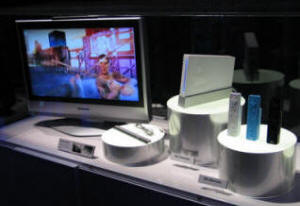 |
|
If you thought Nintendo was trying to be creative with the GameCube, the design of the Wii is super small and around the thickness of
3 DVD cases. Its sleek design is meant to fit in with the rest of your multimedia setup (somehow that bulky Nintendo 64 just
doesn't fit in with that sleek audio system. That Barney purple GameCube just didn't match either). The Wii will come in
different colors and can be placed vertically or horizontally similar to the PlayStation 2. OK...so the thing is good looking. What the heck is under the hood? The console sports an IBM Power PC based processor codenamed "Broadway" and an ATI graphics processor called "Hollywood". It uses a total of 88 MB of RAM. The Wii will also have 512 MB of built-in flash memory for storage. For more detail, please see our Specs section.  On the outside the Wii sports two USB 2.0 ports and a SD Memory card slot for gaming. It also has a slot loading optical disc drive capable of handling both 12 cm and 8 cm proprietary optical discs. Behind a flap there are also ports for four GameCube controllers and two memory cards. Obviously with those ports and the 8 cm optical disc, you can pretty much figure out that Wii is backwards compatible (a first for Nintendo). They stuck with their usual propriety audio / video output port, but it is be able to display on both television and computer monitors up to 480p (PAL/NTSC) or 576i (PAL/SECAM), standard 4:3 and 16:9 anamorphic widescreen (no High Definition support). Nintendo also decided to join the online-gaming community and gave the console 802.11b & 802.11g wireless support or through a USB-to-Ethernet adaptor. Nintendo's online gaming service is free. The console can also communicate and connect with other Wii systems through a self-generated wireless LAN. The online capability also uses an always on WiiConnect24 service which allows for firmware updates to the console. This could add addition functionality to the console. |
|
|
The Wii user interface adds additional features to the console and works similarly to accessing a television channel. These
channels are graphically displayed in a grid and are as follows: the Disc Channel (games), Mii Channel (online gamer profiles), Photo
Channel (view stored photos), Wii Shop Channel (purchase features and more), Forecast Channel and News Channel. Additional
channels can be downloaded from the Wii Shop Channel such as the Internet Channel (surf the internet) and Virtual Console Channel. Virtual Console takes backwards compatibility to another level. You can download and play games spanning systems from Nintendo NES / Famicom, SuperNES and Nintendo 64 (for a fee of course). It also features "best of" selections of Sega Genesis titles and games from the TurboGrafx 16. The Wii can also communicate wirelessly with the Nintendo DS handheld. The controllers are also wireless. |
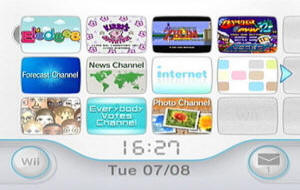 |
|
On the topic of controllers, this is where the Wii is truly revolutionary. Nintendo created a motion sensing controller that
resembles a remote. It communicates using Bluetooth and features force feedback with an internal speaker. Motion of the remote
is translated to motion on screen. The controller can connect to other devices, like the included analog stick, through a
proprietary port at the base of the controller. Up to four Wii Remote controllers can be connected wirelessly. The innovation and uniqueness of the Wii generated a successful launch even against more technically superior console competitors. |
|
|
by Dark Watcher |
|
|
The Dark Watcher has fostered quite a love/hate relationship with Nintendo over the years. We adored you through the
NES/SNES
days and were ignorant of your monopolizing tendencies. You frustrated us with your endless Game Boy revisions and angered us
with the cost of Nintendo 64 carts. You confused us at first with your purple
GameCube. You did not take advantage of
backwards compatibility. You saw no value in online gaming. You made us buy those damn memory cards and then made better
ones later. We were on the verge of divorcing you Nintendo! Then you go and take the cool code name 'Revolution' and name
your 7th Generation console 'Wii'. Really? Seriously? And then we are happy again like someone with a bi-polar
disorder. We have seen Nintendo designs grow and change through many generations. From the bulky NES front loader, yellowing SNES (damn flame retardant chemicals), WTF Nintendo 64, then to a purple cube. We expected another odd toy-like device from Nintendo. |
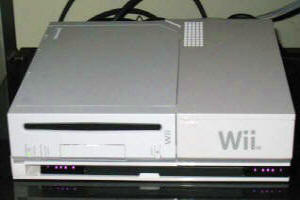 |
|
What we got was a white, sleek and stylish device that looks like the drive bay to a tower computer (Nintendo, as always, later
released other color (damn you!). At 44 mm (1.73 in) thick, 157 mm (6.18 in) width and 215.4 mm (8.48 in) length, it almost
looks like three (3) old NES cartridges stacked (or 3 Xbox 360 game cases for the youngsters that don't get the reference). It
is small and shaped well enough to fit in almost any entertainment center. It can also be oriented horizontal or vertical.
The POWER / Reset / Eject buttons are very responsive and the blue glowing optical disc feed slot is a nice touch. The console itself feels pretty durable and many online console smash videos show it. However, the included sensor bar is questionable. We would almost go as far as saying Wii has "on the go portable" potential like the GameCube, but all those damn hookups (power brick, TV-out, sensor bar, etc) take away from "pack and go". The Wii communicates with its controllers via wireless Bluetooth (to handle up to 16 controllers), but also features built-in Wi-Fi 802.11b/g. It also has two (2) USB 2.0 ports for use with accessories like a USB to Ethernet adaptor or a keyboard. The biggest thing that sets Wii apart, particularly in innovation, is the controllers. The Wii-Mote can best be described in our History of the Game Controller feature, but put simply the remote looking controller uses infrared and motion sensors to interface with Wii games / features. The wireless controllers give you an almost in game feel and work with many accessories (and a crap ton of cheap plastic shells). The Wii uses a channel-based GUI interface that works very well with the Wii-Mote controller. |
|
|
Nintendo seemed to take ole DW's list of complaints into consideration (other gamers as well, but our review... Let our ego soar and
pretend it was our input). Those damn memory cards? No problem. Wii has 512 MB of internal flash memory and can also
use SD flash (up to 32 GB SDHC). Backwards compatibility? Wii is backwards compatible with GameCube software and most
accessories (**2011 Wii redesign removes backwards compatibility). They also took it a step further with Virtual Console. Virtual Console allows the Wii to play games from not only Nintendo's older consoles (NES, SuperNES, Nintendo 64), but also select titles for classic system by Sega (Master System / Mark III and Mega Drive / Genesis), NEC (Turbografx-16 / PC-Engine), MSX (Japan only), Commodore 64 (select arcade titles) and SNK (Neo Geo). VC (Virtual Console) is all done via software emulation and the games are purchased from the Wii Shop Channel. There is rumor mill that they will add more, but the bottom line is that they addressed backwards compatibility and then some. Nintendo partially addressed the issue of online game play using built-in Wi-Fi or Ethernet, but it requires inputting / sharing a 12 digit Friend Code. |
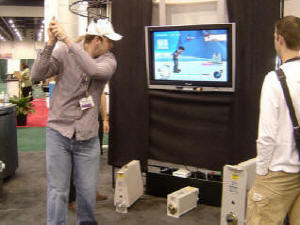 |
|
Graphically, the Nintendo Wii cannot compete with its 7th generation counterparts, but it can output 480p resolution in standard or
16:9 widescreen. The hardware is nearly twice as powerful as its predecessor GameCube. There have been a few games that
push the envelope in terms of what Wii can do graphically (Metroid Prime 3, Resident Evil: Darkside Chronicles), but for the most part
the focus is more on game play. Audio wise, the Wii can do Dolby Pro Logic II stereo. The Wii was made for games and in terms of them there is no shortage. Wii specific game discs come in a dual-layer "DVD-like" proprietary format. They can be scratched like most optical media, but the Wii features error correction to handle disc imperfections. The Wii also features parental controls that can lock out games that fall in particular ratings (all set by the user). The Wii game library covers every genre. The library is expanded even further with the GameCube library (**2011 Wii redesign removes GC compatibility) and Virtual Console titles. Game titles are expanded even further with downloadable WiiWare games. |
|
|
One of the issues with Nintendo's previous consoles is that they offered no functionality outside of gaming. Nintendo rectified
this with channels on its GUI interface. The Wii can browse the web, has a photo gallery feature, plays music (AAC, M4A), has a
weather channel, news channel and as of October 2010 can stream movies through Netflix. Wii is a tiny little box with lots (and lots) of gaming potential. It falls short in terms of comparing to the audio / video prowess of 7th generation competition, but brought about enhanced motion controller innovation. Best of all is the low retail price that continues to drop over time. |
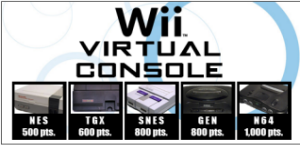 |
|






 2010s - NOTES
2010s - NOTES


 MODELS
MODELS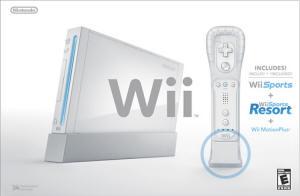
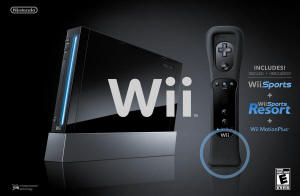
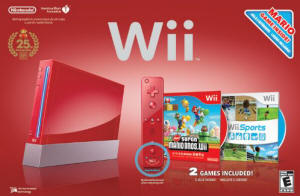
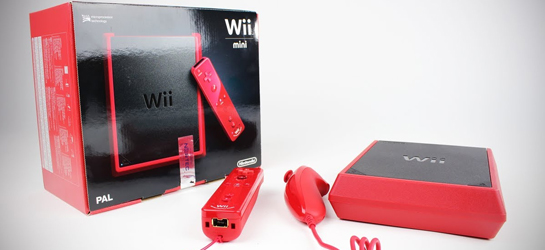
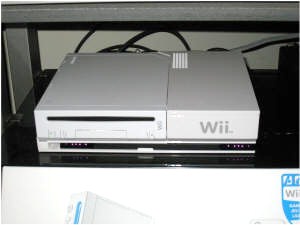
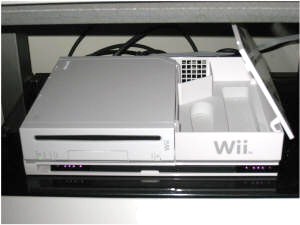
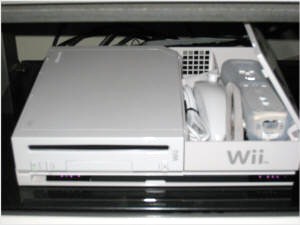
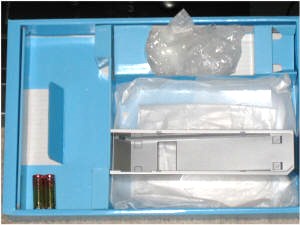
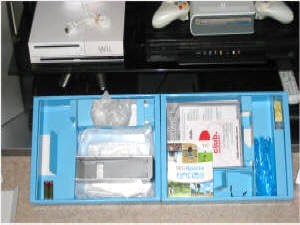
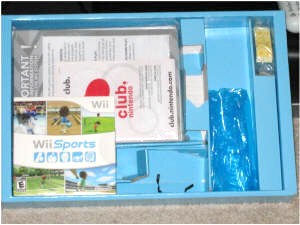
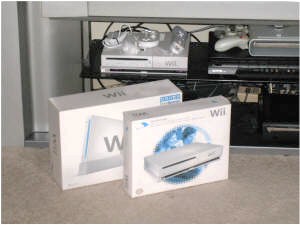
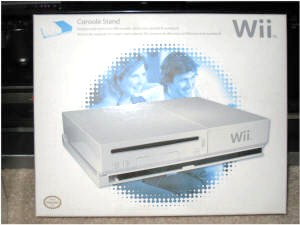
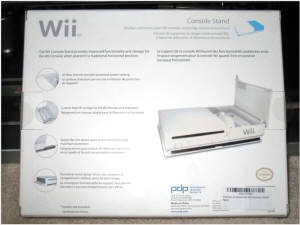
 CLONES
CLONES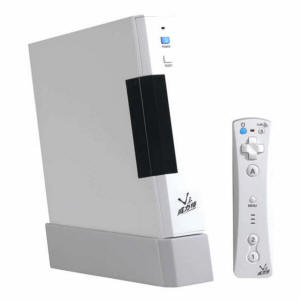
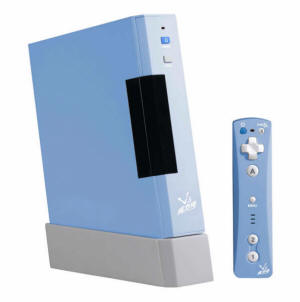
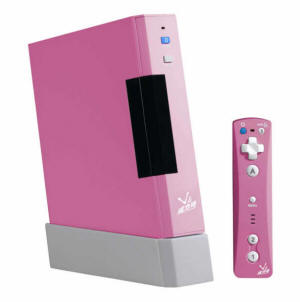
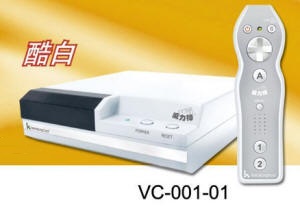
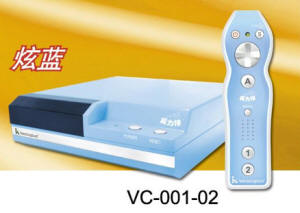
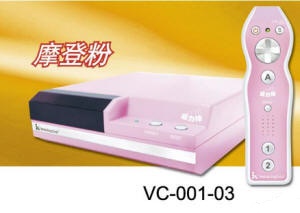
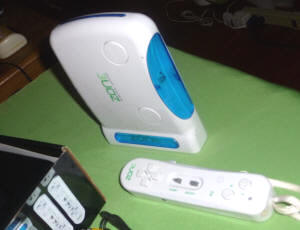
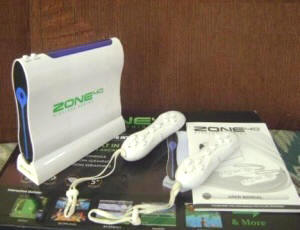
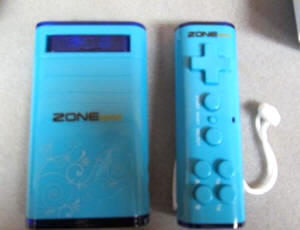
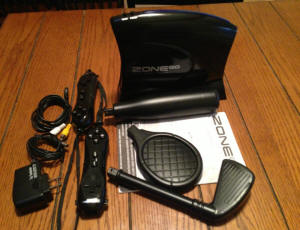
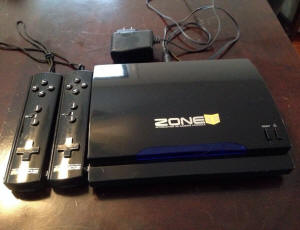
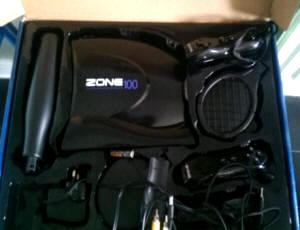
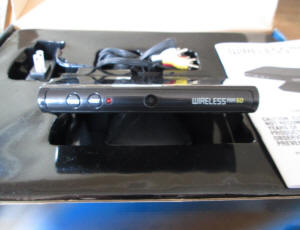
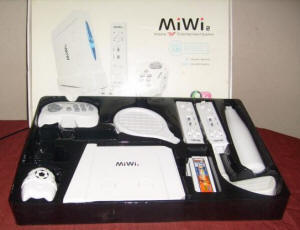
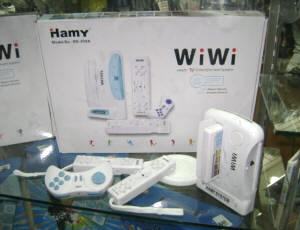
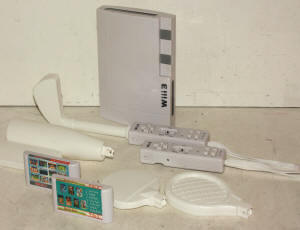
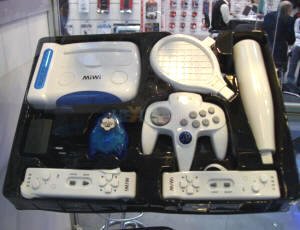
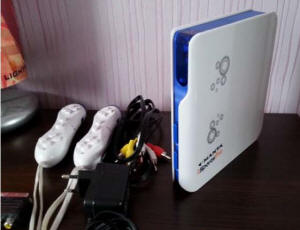
 CONSOLE RATINGS
CONSOLE RATINGS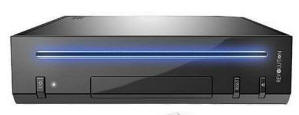
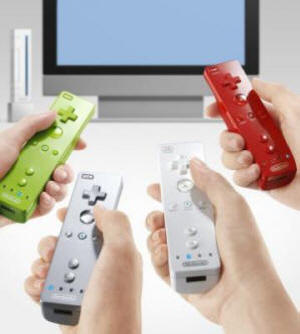

 FORMAT, PACKAGING & GENERAL INFO
FORMAT, PACKAGING & GENERAL INFO
 SCREENSHOTS
SCREENSHOTS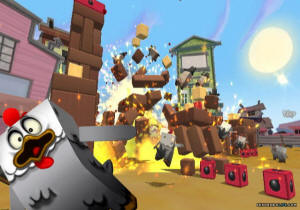
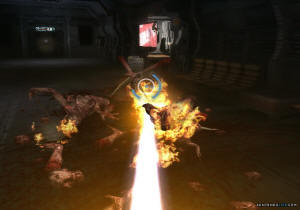
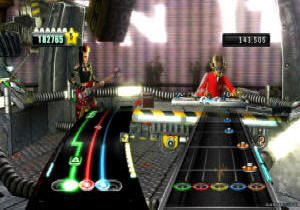

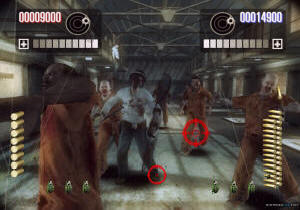
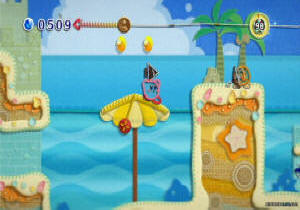
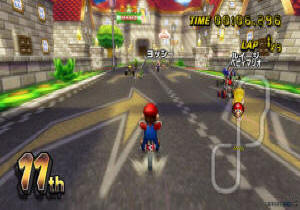

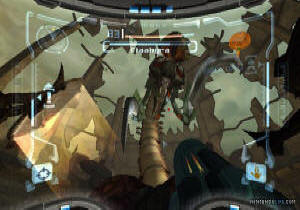
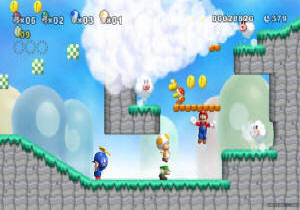

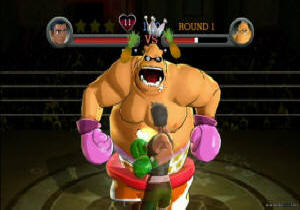
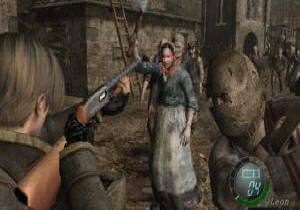
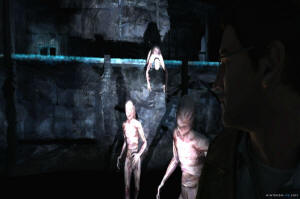
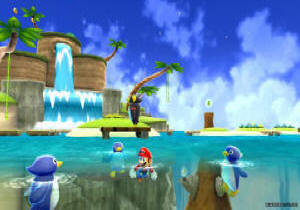
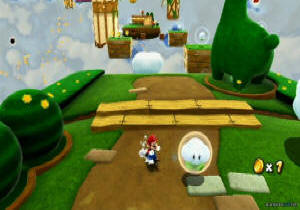
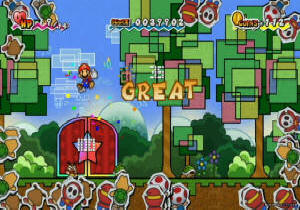
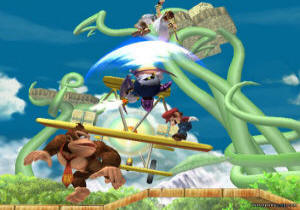
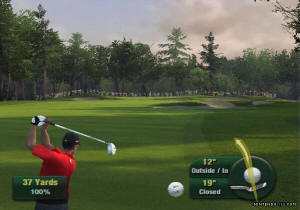
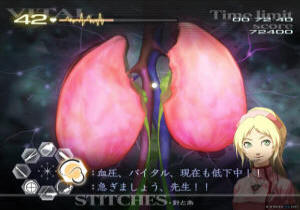
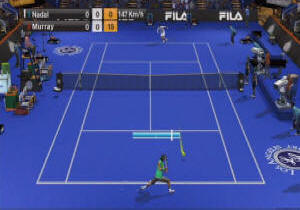
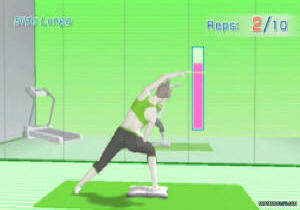
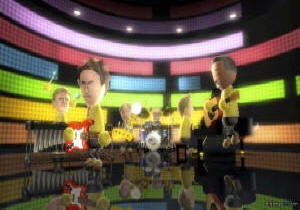

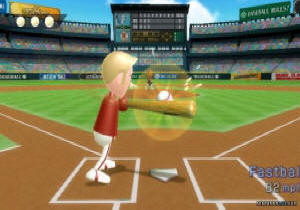


 EMULATION
EMULATION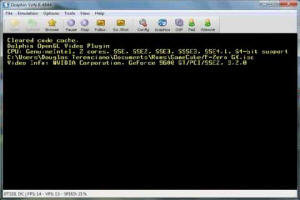
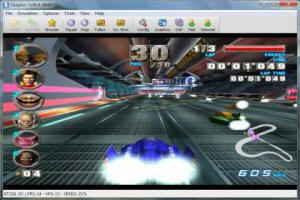
 SPECS & MANUALS
SPECS & MANUALS OTHER
MEDIA
OTHER
MEDIA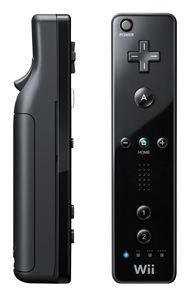
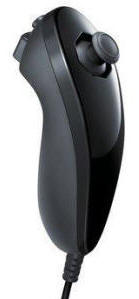
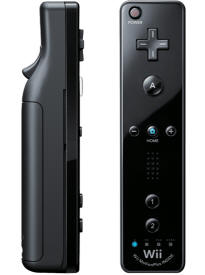
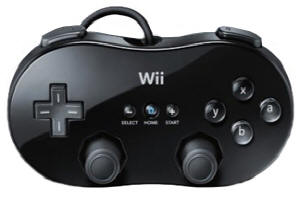
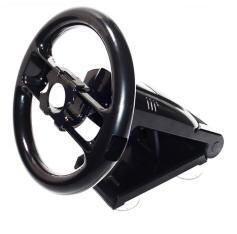
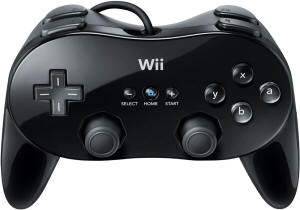
 WEB RESOURCES
WEB RESOURCES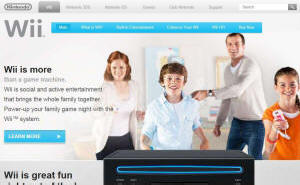

 DISCUSS
DISCUSS